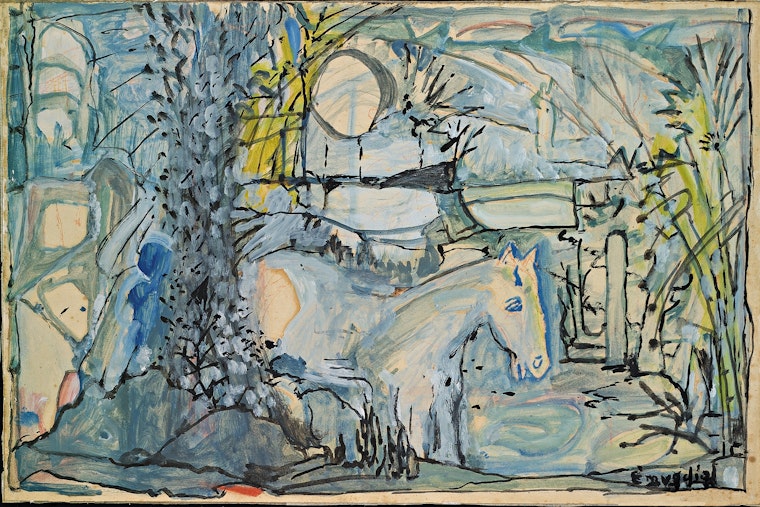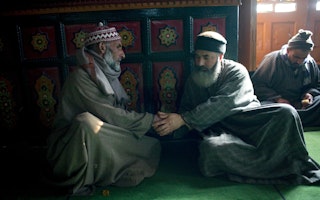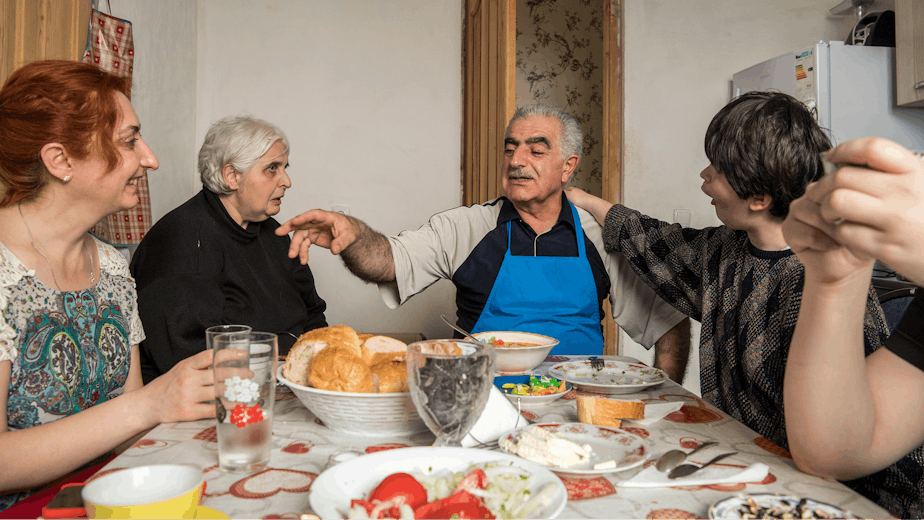Q&A: A Groundbreaking Vision of Art and Humanity

Brazil’s Museum of Images from the Unconscious, founded in 1952 by the pioneering psychiatrist Nise da Silveira, challenges rigid notions of mental health through experimentation and art. Recently, Open Society’s Gabriela Barros de Luca, spoke with Eurípedes Junior, deputy director of the Society of Friends of the Museum of Images from the Unconscious, about the museum’s philosophy and work.
To begin, could you explain why the conventional way of thinking about mental health—as a duality, with sickness on one side and health on the other—is wrong?
For one thing, the framework fails to recognize that mental health challenges are often products of a combination of internal and external factors, such as financial, social, or familial circumstances. This failure is compounded by a treatment model that relies heavily on medication and institutionalization. While many people may benefit from medical interventions, they don’t address the numerous barriers to well-being such as disconnection from one’s community and economic insecurity.
We need to look at mental health challenges not as a pathological condition or illness, but rather as a universal human experience—treating people with that tenant in mind. Society has a lot to learn from the experiences of people who we deem to have mental health challenges—they have greater access to their inner world, which is something we could all benefit from.
How should we think about this issue instead?
We need to recognize that well-being is more than merely a function of brain chemistry. We must center the voices of people who have real experience with mental health challenges. For example, Nise da Silveira refused to refer to the people under psychiatric care as “patients,” because she thought the term implied passivity, rather than patients actively pursuing their own well-being. Dr. Nise preferred to call them “clients."
What does that look like in practice?
To continue using Silveira as a guide: She believed that letting her clients express themselves through the arts would not only benefit them but also help others recognize everyone’s shared humanity.
We are used to prioritizing external factors in our lives while our internal realities—dreams, fantasies, delirium—are often neglected. Yet to treat what we refer to as "mental health challenges," people need to find equilibrium between their external environment and their internal selves. Indeed, we believe that society has a lot to learn from these experiences. People who have been institutionalized, stigmatized, excluded, and said to have nothing to contribute to society actually have invaluable insight about the unconscious mind. They bring us knowledge that we otherwise would not have access to.


What is the status of people with mental health challenges in Brazil?
Brazil’s strong anti-asylum movement was able to push for enormous social change that resulted in the end of all psychiatric hospitals in the year 2000—the year that marked the beginning of what is now known as the country’s psychiatric reform. But the deinstitutionalization process of moving people out of asylums and into structures where they can fully enjoy their autonomy and rights has been a challenge and is still incomplete. Many people who were released from asylums in this deinstitutionalization process are still living in semi-institutional settings waiting for vacancies in assisted living housing, which seems less likely to occur in the current political environment.
What is the Museum of Images from the Unconscious?
The museum is housed on the grounds of what used to be Brazil’s first and largest psychiatric hospital complex from the 1800s. It was created by Dr. Silveira, a pioneer who did not accept the forms of psychiatric treatment used at the time, such as electroconvulsive therapy, lobotomy and insulin shock therapy. She instead gave a space for people to express themselves with art. The pieces produced by those in her treatment eventually attracted the interest of art critics.
The museum now has the largest art collection of its kind—produced by people housed in psychiatric institutions—with close to 450,000 pieces from patients. Some of these pieces are currently on display at the Berlin Biennale 2020. The museum also continues to display art produced by people currently undergoing mental health treatment.
These “images of the unconscious” allow viewers to establish a bridge between their own world and the deepest yearnings, fears, traumas, joys, and dreams of the artists.
How has the museum continued to work during the pandemic?
People have stopped coming to the museum for treatment, but our staff has responded by remotely assisting patients through regular online and phone communication so they can keep expressing themselves creatively while at home. The result is that people are no longer restricted to just a few hours a week when they can produce art; they are producing art from their homes all day long.
The situation of confinement that society has been experiencing in the last few months with the pandemic is an experience that many people with mental health challenges have mastered, as they have experienced confinement and exclusion from society long before the pandemic. It’s been incredible, frankly, to see them thrive. Many have been more motivated and prolific than ever.
The Museum of Images from the Unconscious is a grantee of the Open Society Foundations.

